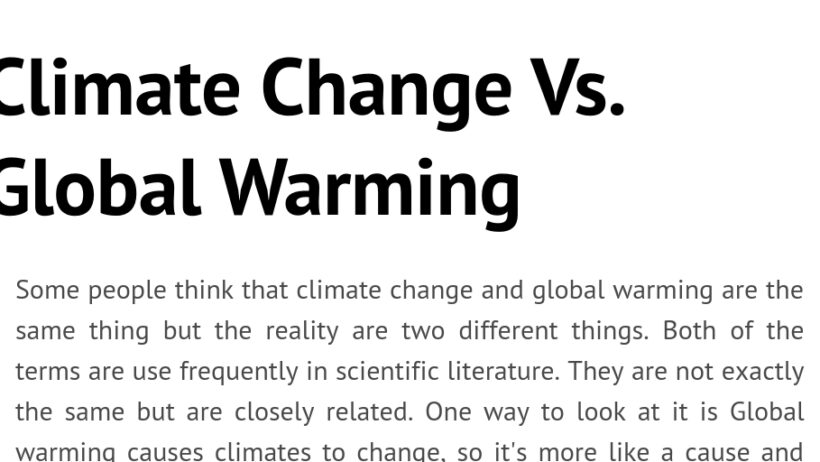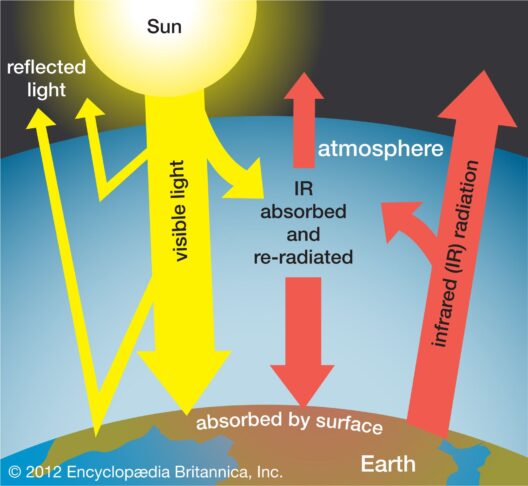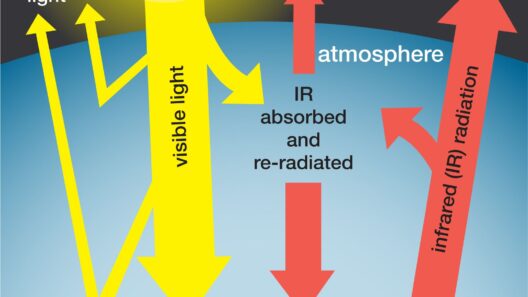Global warming, a phenomenon often encapsulated in scientific jargon, can lose its significance in the cacophony of contemporary discourse. Thus, finding a vivid analogy can render this complex issue more accessible and engaging to the public. Consider this—imagine our planet as a giant, finely tuned symphony. Each instrument plays a critical part in creating a harmonious melody that embodies life on Earth. Now, envision what occurs when one musician begins to deviate from the score. Over time, this minor dissonance can escalate into a cacophony that disrupts the entire orchestra. Global warming is akin to that one musician abandoning their rhythm.
On the global stage, the sun’s rays infiltrate our atmosphere, much like an enthusiastic conductor directing an orchestra’s crescendo. When everything is in balance, this natural energy warms our planet to a bearable degree. However, human activities—particularly the combustion of fossil fuels and deforestation—have introduced a disruptive force. If our atmosphere were the sheet music, greenhouse gases such as carbon dioxide and methane are the increasingly errant notes that not only sour the harmony of this melody but also amplify its intensity, driving up the temperature of our planet.
The impacts of this metaphorical dissonance are profound. Just as a crescendo can lead to chaotic noise, the rising temperatures manifest as catastrophic climate events—floods, hurricanes, and droughts becoming the harrowing consequences of our neglect. In the symphony analogy, we have not just lost the melody; we have begun to dismantle the entire orchestral arrangement. Each rise in temperature leads to profound alterations in local climates, forcing communities and ecosystems to adapt or face extinction.
To further elucidate this point, let us examine the vital concept of feedback loops. In the symphony, certain instruments complement each other in delicate balance. However, when one musician plays too loudly, the feedback can resonate back, intensifying the initial disruption. A striking parallel exists in the realm of climate dynamics. For example, as glaciers melt due to rising temperatures, the reflective surfaces that once deflected heat are replaced by darker ocean waters that absorb sunlight, thus exacerbating global warming. This feedback loop, much like a series of dissonant chords, accelerates the decay of our once harmonious climate.
Now, consider the role of the audience in this analogy. The audience represents humanity, engaging with the performance of the symphony. At first, they remain oblivious to the discordant sounds infiltrating the melody, comfortable in their seats, enjoying the show. Yet, as the music grows increasingly chaotic, the discomfort sets in. The climate crisis is akin to the audience’s growing unease—a plummeting violin note that suggests an eruption of chaos. It becomes harder to ignore the creeping effects of climate change when faced with increasingly vivid and tangible realities: rising sea levels, displaced communities, and endangered species.
What if we were to reimagine ourselves not merely as spectators but as active participants in this orchestral performance? Each individual possesses the unique instrument of their voice. By advocating for sustainable practices, reducing consumption, and supporting clean energy, people contribute to restoring the harmony disrupted by decades of negligence. Collectively, humanity has the power to retune the world’s orchestra, easing the dissonance and promoting an era of sustainability. Every small choice—a switch to renewable energy, the adoption of public transport, or even consuming less—serves as a note of resolution in this troubled symphony.
Moreover, consider the implications of collaboration within this analogy. Just as orchestras collaborate for a sonorous result, countries must unite in a global commitment to combat climate change. The Paris Agreement, for instance, acts like a new arrangement for the orchestra, providing a framework for nations to play in concert. Each nation must play its part, adhering to agreed-upon measures to mitigate emissions and protect resources. The triumph of this global symphony will not hinge on individual virtuosos but rather on the harmonization of efforts from every participating member.
It is essential to recognize, however, that time is not on our side. The metaphorical conductor is pushing for urgency—an acceleration of the tempo that indicates the need for immediate action. If the dissonance continues unchallenged, we risk plunging into a situation where the melody of life becomes irretrievably altered. The ultimate crescendo could lead to significant biodiversity loss and shifts in global agricultural practices that could threaten food security.
In conclusion, a good analogy for global warming can be the metaphor of a symphony—a magnificent orchestration of life where each component plays a vital role in sustaining harmony. Global warming is a discordant force, and it is only through awareness and concerted efforts that humanity can hope to restore equilibrium. The call to action is clear: we must retune our instruments, collectively transform our practices, and rehearse resilience to safeguard our planet’s symphony for future generations. It is not merely an environmental issue; it is a performance that shapes the very essence of our existence. The world is in need of a new rhythm, a cadence that emphasizes sustainability, respect, and balance. Only together can we harmonize and create a symphonic future that transcends the dissonance of our actions today.







